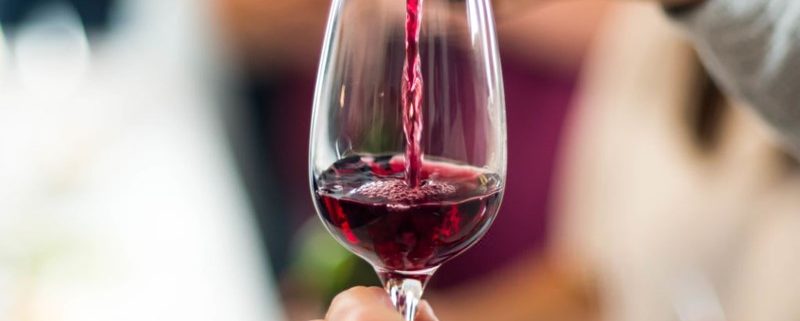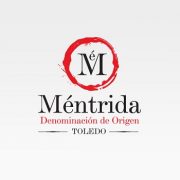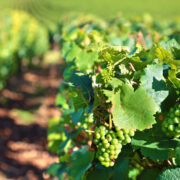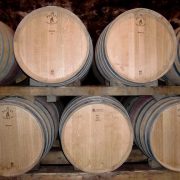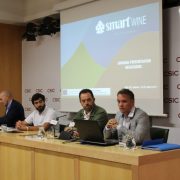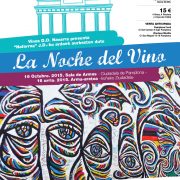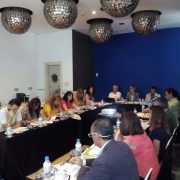Why wine is more than just an alcoholic beverage?
As 2021 comes to an end, it will soon be time to make a toast for the New Year. It is also time for some reflection on past events and defining the direction for 2022. I am seizing this opportunity to take a closer look at one of the most festive agricultural products: wine.
2021 has been a challenging year in many respects for the wine sector. Similarly to last Christmas, European winegrowers, albeit to varying degrees, are still faced with severe challenges emanating from the COVID-19 pandemic, such as the closure of the HoReCa sector and the rise in stocks. On the production side, climate change is putting pressure on producers as weather events in spring and summer have taken a severe toll on the 2021/2022 EU wine harvest which has dropped by 13%. Just when consumption began to recover and exports resumed, production and transport costs soared to unsustainable levels, thereby running the risk of compromising margins and the EU wine sector’s competitiveness.
Notwithstanding this and according to the European Commission’s monitoring of EU agri-food trade, wine remained the major driver behind the rise in EU exports of agri-food products in the first seven months of 2021. During the January-July period, trade in wine registered a 30% increase (€2.2 billion), thereby contributing to the surplus in agri-food trade in the EU-27 which stood at €39 billion. As a key natural agricultural product, wine and winegrowing play a vital role in maintaining jobs and ensuring the economic, social, and environmental sustainability of rural areas where alternatives are limited. Indeed, many communities exist solely thanks to winegrowing.
The full economic cycle of wine production and marketing alone is estimated to create 3 million direct full-time jobs which help maintain the population in rural areas and
prevent rural exodus. As Chairman of the Copa-Cogeca Working Party on Wine, I follow all EU policy developments very closely. Although I fully share the objectives of the plan to combat cancer, I must admit that I was surprised by the approach taken by the European Parliament’s Special Committee on Beating Cancer (BECA committee). The report voted through in early December in the BECA committee on the Commission’s Beating Cancer Plan suffers from a substantial lack of balance, especially in its approach towards wine consumption.
In my opinion, it mistakes use for abuse and fails to differentiate between moderate and harmful consumption. The report put forward the claim that “there is no safe level of alcohol consumption when it comes to cancer prevention”. This claim represents a generalisation of the scientific evidence currently available that disregards the divergence of findings and opinions among members of the scientific community. Not only do such claims overlook the economic, environmental and social dimensions of winegrowing, but they also stigmatise an agricultural product that is part of our culture and tradition without effectively tackling the root causes of harmful consumption.
Copa-Cogeca strongly supports the overall goal to fight cancer at every key step of the disease. Together with the other wine associations, we are committed to promoting responsible wine consumption and reducing the harmful use of alcohol through initiatives like the Wine in Moderation programme – a social responsibility programme launched in 2008 by the European wine sector.
We believe that the right response to excessive/harmful consumption must be through education and awareness. Emphasising the importance of moderate consumption alongside a balanced and healthy diet and overall lifestyle can go a long way in reducing excessive consumption and achieving long-lasting results. Quick fixes have time and again proven to be ineffective.
Furthermore, we fully support the nutritional and ingredients labelling provisions on wine set out in the recently adopted Common Agricultural Policy reform. In the framework of the CMO Regulation, co-legislators agreed that the mandatory list of ingredients and nutritional information, with the exception of energy value, may be provided off-label by electronic means identified on the label or packaging. Having already made voluntary commitments since 2018 to this end, we are convinced that the nutritional and ingredients labelling provisions will increase transparency and certainty for consumers. Digital technologies offer flexibility and the opportunity to put product information into a broader context.




